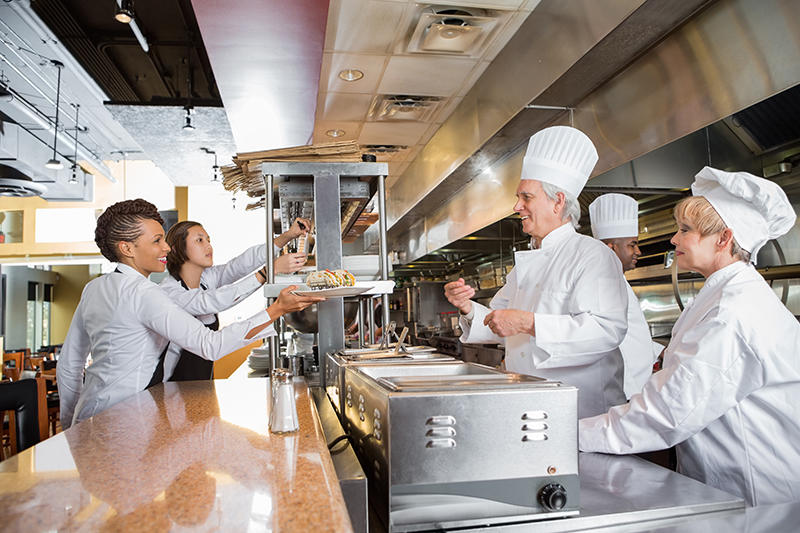Department of Employment 2021, Employment Projections, available from the Labour Market Information Portal
- by 2 digit ANZSIC 44 Accommodation and 45 Food and Beverage Services industries, employment projections to May 2025.
- by ANZSCO, selected occupations, employment projections to May 2025
- 8114 Housekeepers
- 1413 Hotel and Motel Managers
- 4315 Waiters
- 3513 Chefs
- 4314 Hotel Service Managers
- 1419 Other Accommodation and Hospitality Managers
- 4311 Bar Attendants and Baristas
- 6211 Sales Assistants (General)
- 8513 Kitchenhands
- 1411 Cafe and Restaurant Managers
- 8511 Fast Food Cooks
- 1421 Retail Managers
- 4312 Cafe Workers.
Australian Bureau of Statistics 2021, 6291.0.55.001 - EQ08 - Employed persons by Occupation unit group of main job (ANZSCO), Sex, State and Territory, August 1986 onwards, viewed 1 August 2021, https://www.abs.gov.au/statistics/labour/employment-and-unemployment/labour-force-australia-detailed/may-2021
- Employed total by 2 digit ANZSIC 44 Accommodation and 45 Food and Beverage Services industries, 2001 to 2021, May Quarter.
Australian Bureau of Statistics 2017, 2016 Census – employment, income and unpaid work, TableBuilder. Findings based on use of ABS TableBuilder data.
- Employment level by 2 digit ANZSIC 44 Accommodation and 45 Food and Beverage Services industries, and 4 digit level occupations to identify the relevant VET-related occupations in the industry as a proportion of the total workforce.
Training data has been extracted from the National VET Provider Collection, Total VET Student and Courses from the following training package or qualifications:
- SIT Tourism, Travel and Hospitality Training Package
- SIT10207 - Certificate I in Hospitality
- SIT10212 - Certificate I in Hospitality
- SIT10213 - Certificate I in Hospitality
- SIT10216 - Certificate I in Hospitality
- SIT20207 - Certificate II in Hospitality
- SIT20212 - Certificate II in Hospitality
- SIT20213 - Certificate II in Hospitality
- SIT20316 - Certificate II in Hospitality
- SIT30616 - Certificate III in Hospitality
- SIT30707 - Certificate III in Hospitality
- SIT30712 - Certificate III in Hospitality
- SIT30713 - Certificate III in Hospitality
- SIT30716 - Certificate III in Hospitality (Restaurant Front of House)
- SIT40307 - Certificate IV in Hospitality
- SIT40312 - Certificate IV in Hospitality
- SIT40313 - Certificate IV in Hospitality
- SIT40416 - Certificate IV in Hospitality
- SIT50307 - Diploma of Hospitality
- SIT50312 - Diploma of Hospitality
- SIT50313 - Diploma of Hospitality
- SIT50416 - Diploma of Hospitality Management
- SIT60307 - Advanced Diploma of Hospitality
- SIT60312 - Advanced Diploma of Hospitality
- SIT60313 - Advanced Diploma of Hospitality
- SIT60316 - Advanced Diploma of Hospitality Management
- THH11002 - Certificate I in Hospitality (Operations)
- THH21802 - Certificate II in Hospitality (Operations)
- THH42602 - Certificate IV in Hospitality (Supervision)
- THH51202 - Diploma of Hospitality Management
- THH51297 - Diploma of Hospitality (Management).
This includes superseded qualifications and training packages.
Data covers a range of selected student and training characteristics in the following categories and years:
- 2016 to 2020 program enrolments
- 2016 to 2020 subject enrolments
- 2016 to 2020 program completions.
Total VET students and courses data is reported for the calendar year. Program enrolments are the qualifications, courses and skill-sets in which students are enrolled in a given period. For students enrolled in multiple programs, all programs are counted. Program completion indicates that a student has completed a structured and integrated program of education or training. Location data uses student residence. Subject enrolment is registration of a student at a training delivery location for the purpose of undertaking a module, unit of competency or subject. For more information on the terms and definitions, please refer to the Total VET students and courses: terms and definitions document.
Low counts (less than 5) are not reported to protect client confidentiality.
Percentages are rounded to one decimal place. This can lead to situations where the total sum of proportions in a chart may not add up to exactly 100%.
SIT Tourism, Travel and Hospitality Training Package apprentice and trainee data has been extracted from the National Apprentice and Trainee collection, including:
- 2011 to 2020 commencements
- 2011 to 2020 completions
- apprentices and trainees in-training October to December 2020 collection, by qualification and state and territory of data submitter.
Job vacancy data have been extracted from Burning Glass Technologies 2021, Labor Insight Real-time Labor Market Information Tool, Burning Glass Technologies, Boston, viewed July 2021, https://www.burning-glass.com.
Data shown represent most requested generic skills, occupations and employers according to internet job postings in Australia between July 2018 and June 2021 filtered by ANZSIC and ANZSCO classification levels listed below.
- Generic skills/Occupations
- Managers
- Technicians and Trades Workers
- Community and Personal Service Workers
- Labourers
- 45 Food and Beverage Services.
- Employers
- 4311 Bar Attendants and Baristas
- 4315 Waiters
- 8512 Food Trades Assistants
- 1411 Cafe and Restaurant Managers
- 3513 Chefs
- 45 Food and Beverage Services.

